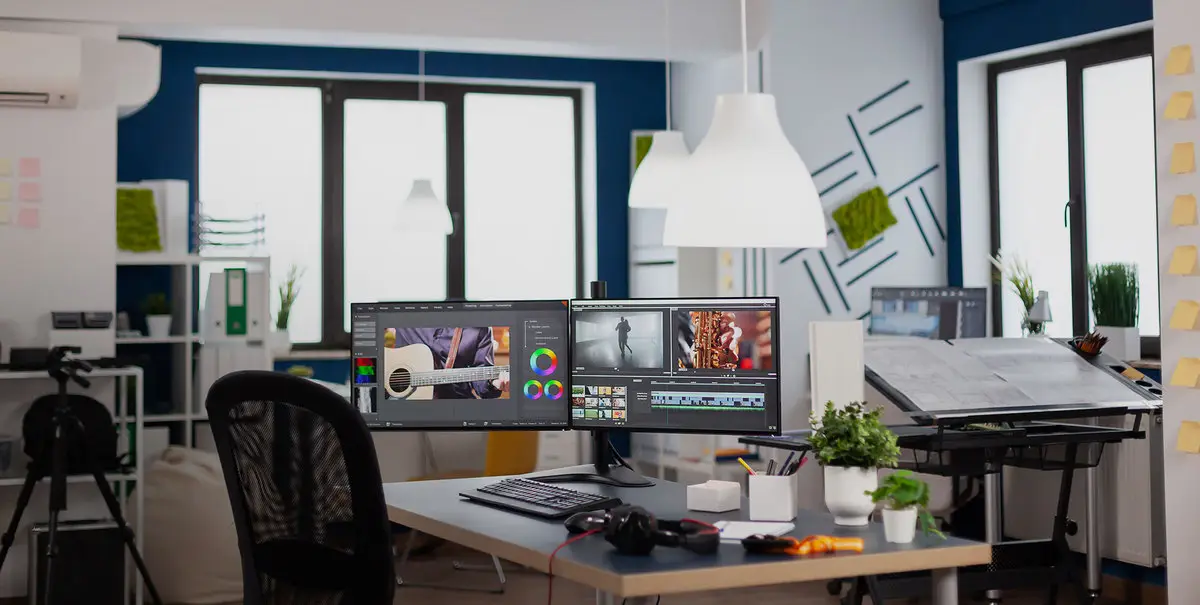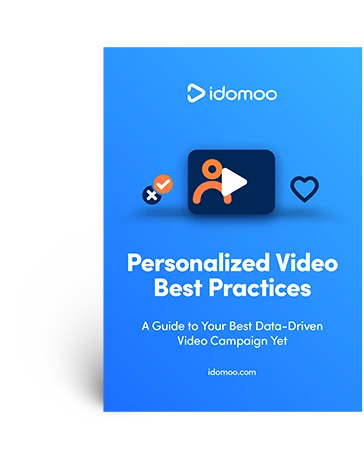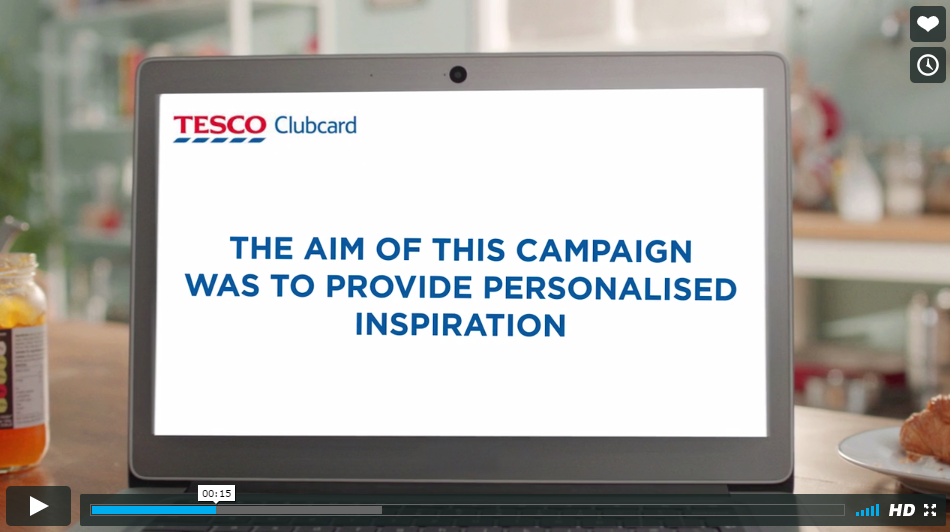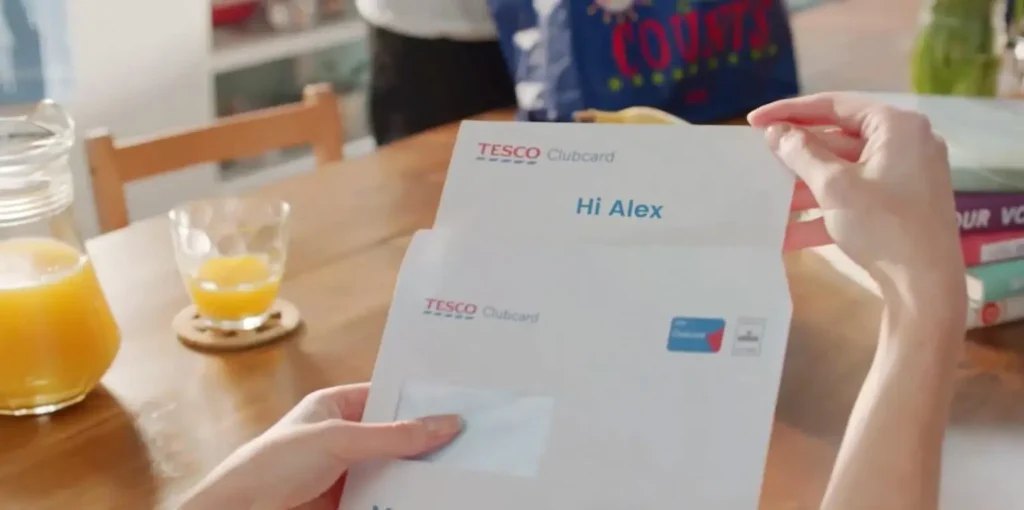Selling video production services to enterprise companies can seem daunting without a clear roadmap. Often, though, the best first steps are the simplest. Think about the problem your potential client needs to solve. Ask insightful questions that can inform your strategy. And show the value of video content in a way that’s clear and data-driven.
Let’s take a closer look at how to approach your initial meeting with a prospective client, how to refine your sales pitch, how to sell video if they’re on the fence, and finally a few tips to close the deal from an agency pro who knows his stuff.
In the First Meeting
First and foremost, to sell your video services, you need to understand the goal and the purpose of your client’s video campaign. Understanding these aspects lays a strong foundation for a productive partnership. Keep the following questions in mind when meeting with a potential client for the first time:
- Who will the campaign be speaking to and what is the communication objective? Tailoring your approach to these factors ensures the video effectively serves its purpose.
- What creative materials does the client have on hand that they want incorporated? Knowing this upfront can enhance the cohesiveness and impact of the final product.
- What elements, specifically, will your production studio be responsible for creating? Whether it’s scripting, filming, editing or all of the above, clarifying responsibilities reduces the risk of confusion and scope creep in the future.
- What aesthetic does the company have in mind? Understanding their visual style will help you make sure that your creative direction aligns with their brand identity.
Beyond objectives and creative visions, it’s also important to lay out a timeline everyone is comfortable with. Knowing when the client expects results and aligning it with your production schedule prevents misunderstandings down the line.
Understanding the type of budget the client has in place is equally essential. Get insights into their financial situation early on to tailor your proposal accordingly. Will the budget not be ready until next quarter? What’s the project’s ideal turnaround once the budget has been approved? Is that doable?
Aligning on pricing and timeline are two big hurdles you want to address early to remove any roadblocks from them saying “yes” to your services.
Ask any videography or digital marketing studio that’s had to wait on client budget approval, and they’ll all likely say the same thing — not having a realistic view of how much money will be available and when that money will be made available can destroy schedules and creative plans.
Next, consider the type of video that can accomplish your client’s goals. Is it a sales video designed to convert or an explainer video designed to reduce support call volume? Maybe it’s a promotional campaign to reach a new target audience or a product video to announce a big launch. Either way, understanding their specific needs allows you to propose tailored solutions.
Come with solutions that show how you’ve created different kinds of marketing videos so you’re prepared with examples that speak to their specific needs. If you don’t have something ready in that first meeting, let them know you’ll follow up with a video to show them. This is just part of the sales process. Nothing sells your services like your past successful videos for other clients.
Refining Your Sales Pitch
Crafting a compelling pitch involves more than just reciting the basics; it’s about tailoring your message to address the unique needs and pain points of your client. Once you’ve gathered all the necessary information, you want to showcase your strengths in the most persuasive way possible. Here are some key strategies to consider:
Personalize Your Pitch
Every company is different, and a one-size-fits-all approach rarely works. You want to tailor your pitch to each prospective client, showing that you understand their business and are committed to delivering a personalized solution. Address their specific needs and you’ll significantly increase your chances of closing the deal.
Start by leveraging the insights you’ve gathered about their business goals, challenges and expectations. For instance, if a client in the insurance industry is looking to improve the onboarding process with helpful videos, you could tailor your pitch to highlight your experience in creating bill explainers or product tutorials.
Aim to acknowledge specific pain points and how your services can address them. If a potential client mentions they’re struggling with low conversion rates, show them how your high-quality video content has previously turned around similar situations for other businesses.
By personalizing your pitch in these ways, you show potential clients that you’re not just offering a generic service but a tailored strategy designed to meet their unique needs and drive results. This not only builds trust but also positions you as a valuable partner invested in their success.
Make Video a No-Brainer for Clients
Within enterprise companies, there can be a lot of daylight between Person A who ideates a video campaign and Person B who grants resources to bring the campaign to fruition.
While working with an enterprise client frequently means larger budgets to play with, it can also mean more red tape and a longer approval process to get the campaign off the ground.
There’s really no silver bullet to speed things up on the client’s end, but being organized and supplying persuasive data can greatly help to reduce friction. By highlighting the impact and return on investment (ROI) of video content with eye-opening stats, you can better convince stakeholders to give the green light.
For instance, point out that 91% of businesses today use video as a marketing tool, with 88% of marketers seeing it as an important part of their overall strategy and 85% planning to maintain or increase their spend on video in 2024.
These businesses know that the way people consume content has changed. More people are streaming TV online and watching video in their social media feeds and on YouTube — and that means the ad content shown to these audiences needs to change as well, largely favoring online video campaigns. It’s an undeniable video marketing trend.
Data has also shown that videos under one minute typically achieve a viewer retention rate of 80% while videos that are 2-3 minutes in length get around 60% viewer retention. Videos in the range of 5-10 minutes tend to get just over 50% retention. This shows that viewers, by and large, are watching because they’re actively engaged with the video’s message, only dropping off once they feel like they’ve gotten the gist.
Here are some additional stats that support the effectiveness and high ROI of video communication:
- According to our State of Video Technology report, 83% of consumers want more video content from brands. This includes personalized, interactive and AI-driven video.
- Social video generates 12x more shares than text and images combined.
- According to HubSpot, 30% of the top landing pages use video, with conversions increasing by as much as 86% when relevant video content is embedded on a landing page.
- According to Wyzowl, video has helped marketers increase user understanding, brand awareness, web traffic, sales and dwell time. It’s also helped them generate leads and reduce support queries.
Ultimately, these statistics not only validate the effectiveness of video but can also be used as tools to persuade enterprise clients of its value. By presenting clear data-backed arguments, video production companies can make a compelling case to their clients of the value of video marketing and streamline approval processes.
Use Visual Aids
As a video production company, you understand the power of visual content better than anyone else. So why not practice what you preach when it comes to selling your services?
Visual aids not only enhance the engagement of your pitch but also serve as tangible examples of your expertise and capabilities. Consider preparing an engaging demo reel that showcases your best work, highlighting diverse styles and the high production techniques that set you apart.
As mentioned before, try to use snippets from relevant case studies to illustrate how you’ve tackled challenges similar to the potential client’s and achieved impressive results. Seeing real examples of your work in action helps them visualize the potential impact on their own marketing efforts.
You could also create a custom video message specifically tailored to a client. Whether it’s a brief introduction from your team showcasing your excitement for their project or a visual breakdown of how your process aligns with their goals, a touch of personalization can leave a lasting impression.
Remember, in a competitive market, standing out is crucial. By incorporating visual aids into your pitch, you not only make your presentation more engaging but also demonstrate firsthand the impact and creativity your video services can bring to the client’s marketing strategy.
So don’t be afraid to let your videos do the talking — they’re some of your best ambassadors in showcasing why choosing your company is the right move for a business’ next big campaign.
Show Your Video Production Competitive Edge
Closing a deal comes down to showing a potential client what value you can offer them that none of your competitors can. And it also means showing them how what you create will instantly set the client ahead of their competitors.
Have you worked on campaigns that did something no one else within their vertical had accomplished? Are you leaning into a new type of technology? Whether you’re putting together a quick reel or sharing whole campaigns, make sure what you’re showing represents your work in the best light possible. You want high-quality videos and impressive success stats.
Signal Productions, a creative agency and video production studio in the U.K., did this wonderfully when they created their video case study of a Personalized Video campaign they did for Tesco.
The case study clearly presented the challenge, solution and concluded with a “how we did it” wrap-up. This approach is great because it educates potential clients on the agency’s capabilities and inspires confidence in their ability to do the same for the client’s campaigns.
Moreover, Signal Productions chose a video that not only looked good but showcased impressive technology (in this case, personalization), delivering an immediate wow-factor to viewers.
Here’s a peek at the Tesco video if you’d like to see.
With attention spans getting shorter and competition growing more intense, leveraging cutting-edge technology can make all the difference when it comes to marketing campaigns. Signal Production’s decision to spotlight personalization technology in its campaign for Tesco helped make it stand out and emphasized the company’s competitive edge.
The key takeaway here is to highlight what makes you different and how this contributes to you delivering results for your clients. Illustrate how your videos can solve specific challenges. Whether it’s through advanced technology, innovative storytelling, or top-tier production quality, make sure your portfolio speaks volumes about your expertise.
Remember, credibility and demonstrable success are your strongest allies. By consistently showcasing your competitive edge through interesting case studies and impactful examples, you can effectively differentiate yourself and close more deals.
10 Tips To Close the Deal
Tony Jones, digital content director at Signal Productions, and his team swear by these 10 things to think about when proposing video to enterprise companies:
1. Multiple stakeholders
The project will have many hard-to-reach senior stakeholders who will often surface just before delivery and insist on changing something that was signed off right at the beginning. The key to avoiding this happening is having a single, reliable point of contact and a well-defined brief from the outset.
2. Technical copywriting
Never assume you can understand the nuances of an enterprise offering. We’ll often bring in a technical copywriter to bring a distinct level of expertise to the project. Their ability to turn complex technical jargon into engaging video scripts ensures that the message connects with the target audience.
3. Insight
Gather as much insight as you can from the client, but don’t be afraid to use other social listening tools to find out what is happening in their market.
Post on
4. Storytelling
The rules still apply — just because the narrative is corporate, doesn’t mean the format needs to be corporate to be boring. Adding a human touch, a sense of comedy or a novel motion graphics technique can make the films more engaging.
5. News
Where did that come from? Consider cultural hot topics. There may be news events that affect the context of the production and last-minute changes to the script. Keep an eye on the news as your client will.
6. Platforms
How will the video be used? Website, mobile, salesware, corporate foyer videos, annual reports, conferences and exhibitions, weekly or monthly corporate communications… Ensure your video can be used across all of these if requested.
7. Personalization
The client may not have considered this, but using Personalized Video can make the video much more engaging, useful and relevant to each recipient. By leveraging user data, these videos are dynamically tailored to individual viewers, which improves relevancy and boosts engagement.
8. Internationalization
Think multilingual. Using dynamic video can make multi-language updates and regionalization much more cost-effective. (A note from Idomoo: Here’s a video from the gaming world so you can see how the same video in multiple languages makes it even more accessible for a global audience.)
9. Budget
Either a budget has been set aside, or you’ll need to quote realistically. Always submit a line-by-line budget so the client can see where the money is being spent.
10. Schedule
The schedule is key to the video production process. Every stage should be clearly agreed in advance from voiceover artists to storyboards and allow enough time for all the internal stakeholders to sign off each stage.
Pretty good advice, right?
The long and short of it is that when it comes down to how to sell video production services to enterprise companies, figure out your hook — what makes your video production services “a need to have” that’s part of a successful enterprise marketing plan instead of just being a “nice to have” perk?
Then illustrate that point using data, previous campaigns, client testimonials… whatever you have in your arsenal. And put together a solid action plan that everyone can buy into.
Stand Out With the Right Tech
As a video production company or creative agency, you want to show that you’re on the bleeding edge of video technology. That means offering your clients the option for interactivity, personalization, the highest cinematic quality, and anything else they need to level up their video marketing strategy.
Learn how some of the world’s top agencies have been snagging awards right and left (like the Effie Awards, the Drum Awards, the DMA Awards for Data Storytelling and more) while wowing clients by leveraging Idomoo’s Next Generation Video Platform.
Our platform stands out as a game-changer in the industry, allowing agencies to create Personalized Interactive Videos at scale and in just a few days. We’d love to take you on a tour of the platform and show some of the results agencies have gotten for their clients that keep them coming back again and again.
Let’s talk.







